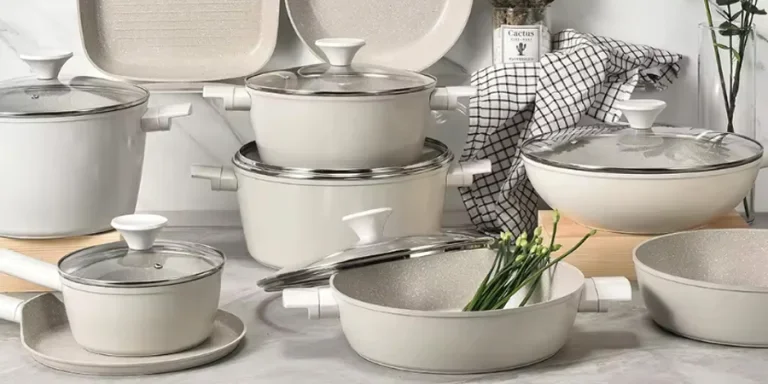Selecting the ideal cookware set is more than just a matter of kitchen aesthetics; it serves as the foundation for culinary excellence. In the bustling world of culinary businesses, where efficiency and quality are paramount, the right set of pots and pans can significantly elevate the cooking process. It ensures even heat distribution, durability, and compatibility with various cooking methods, directly impacting the flavor, texture, and overall success of dishes. As industries evolve and culinary techniques become more sophisticated, the choice of cookware becomes a critical decision that influences not only the efficiency of kitchen operations but also the satisfaction of the end consumer. This essential guide aims to shed light on the intricacies of modern cookware sets, their functionalities, and how they contribute to the art and science of cooking in professional settings.
Table of Contents
1. Cookware sets: Types and applications
2. 2024 cookware market insights
3. Criteria for cookware selection
4. Top cookware sets of 2024: Features and innovations
5. Conclusion
Cookware sets: Types and applications
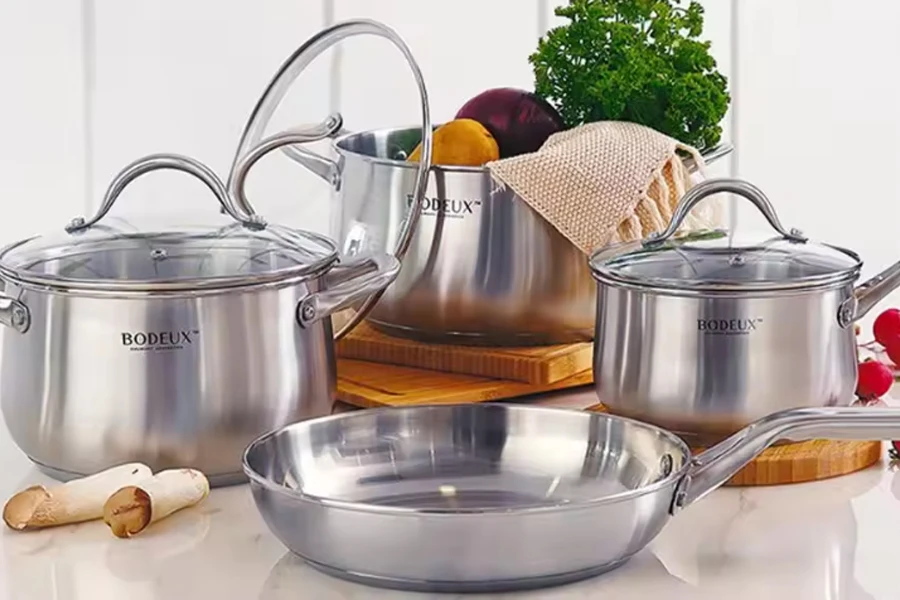
In the realm of professional culinary settings, the selection of cookware sets is not just a matter of preference but a strategic decision that influences both the efficiency of kitchen operations and the quality of the culinary outcomes. The choice of materials and the composition of cookware sets are pivotal factors that deserve careful consideration.
Materials matter: Stainless steel, nonstick, and beyond
Cookware sets are crafted from a variety of materials, each offering unique advantages and catering to different cooking needs. The primary types based on materials include stainless steel, nonstick, and other alternatives like cast iron, copper, and ceramic. Understanding the characteristics and applications of these materials is crucial for selecting the right cookware set.
Fully Clad Tri-Ply Stainless Steel: Fully clad tri-ply stainless steel cookware represents the pinnacle of stainless steel technology in the culinary world. This type of cookware consists of three layers: an aluminum or copper core sandwiched between two layers of stainless steel. The core extends throughout the base and up the sides of the cookware, providing superior heat conductivity and distribution. The stainless steel layers offer durability and a non-reactive surface, making it safe for cooking a wide variety of foods without altering their taste.
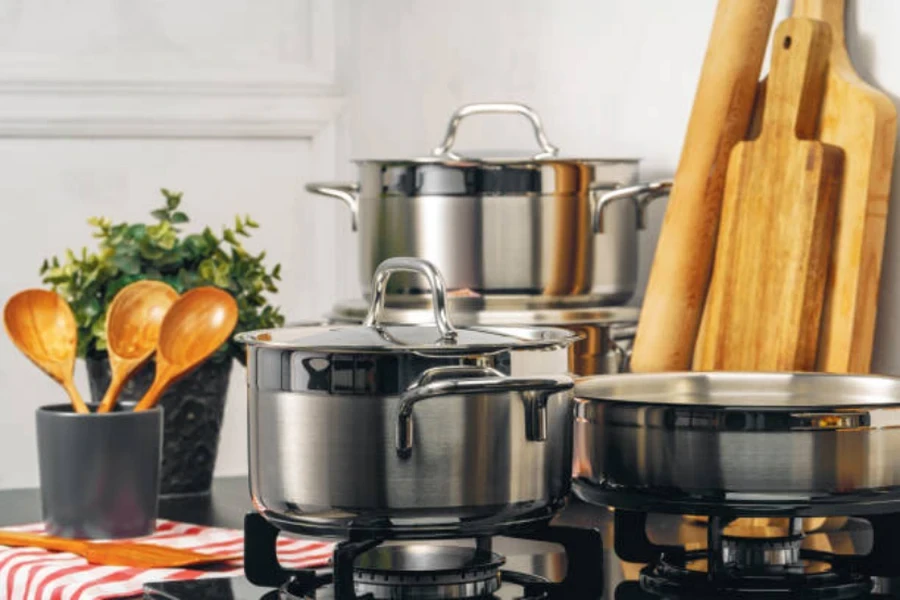
Benefits for Even Heat Distribution: The aluminum or copper core in fully clad tri-ply stainless steel cookware is key to its even heat distribution. These metals are excellent conductors of heat, allowing for quick and uniform heating across the cooking surface. This even heat distribution is essential for preventing hot spots, ensuring that food cooks evenly, and achieving precise temperature control. Such consistency is especially important for tasks that require steady heat, like simmering sauces or searing meats.
Nonstick Cookware: Nonstick cookware is coated with a material that prevents food from sticking to the surface, making it ideal for cooking delicate dishes like eggs, pancakes, and fish. The nonstick coating also allows for cooking with less oil or butter, promoting healthier cooking methods.
Specific Use Cases: Nonstick cookware shines in scenarios where ease of use and cleanup are priorities. Its slick surface ensures that food releases easily, making it a go-to choice for quick meals and simple cleanups. However, nonstick coatings have limitations, particularly regarding heat tolerance. High temperatures can degrade the coating over time, so nonstick pans are best reserved for low to medium heat cooking. They are not typically suitable for high-heat searing or broiling, which are better served by materials like stainless steel or cast iron.
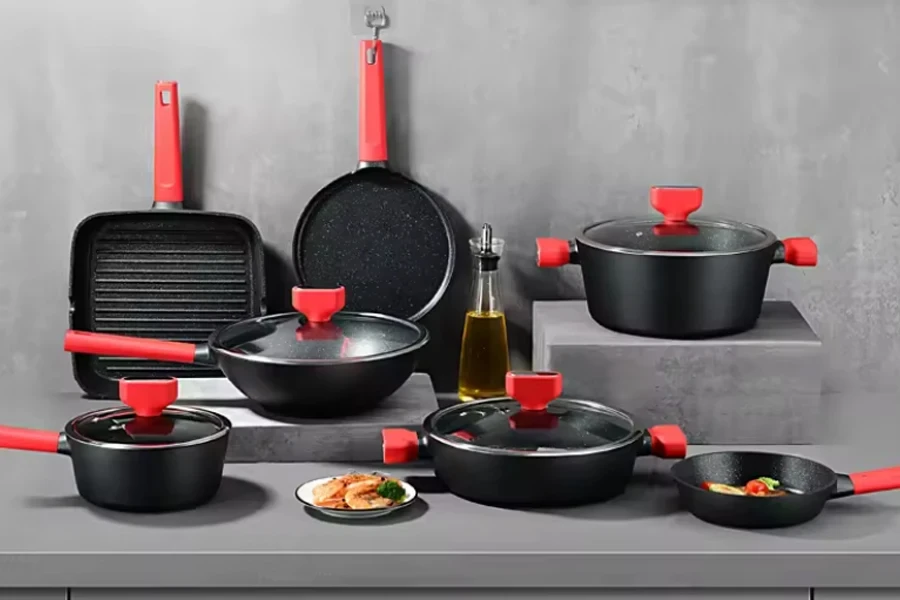
Beyond Stainless Steel and Nonstick: Other materials like cast iron, copper, and ceramic offer additional options, each with its own set of advantages. Cast iron is renowned for its heat retention and is ideal for high-heat searing and oven use. Copper cookware provides exceptional heat conductivity, offering precise temperature control for delicate sauces and dishes. Ceramic cookware, often found with a nonstick coating, offers a lightweight alternative that’s free from certain chemicals found in traditional nonstick coatings.
In conclusion, the choice between stainless steel, nonstick, and other materials depends on the specific cooking tasks and preferences at hand. Fully clad tri-ply stainless steel offers the versatility and even heat distribution suited for a wide range of cooking techniques, while nonstick cookware provides ease of use for delicate dishes and quick cleanups. Other materials like cast iron, copper, and ceramic extend the range of options, each tailored to specific culinary needs.
Size and composition: Building a versatile kitchen arsenal
Building a versatile kitchen arsenal requires careful consideration of the size and composition of cookware sets. The goal is to assemble a collection that covers a wide range of cooking tasks, from boiling and sautéing to frying and simmering, without cluttering the kitchen with redundant or seldom-used pieces. Here’s an analysis of essential cookware pieces and their roles in a functional kitchen setup:
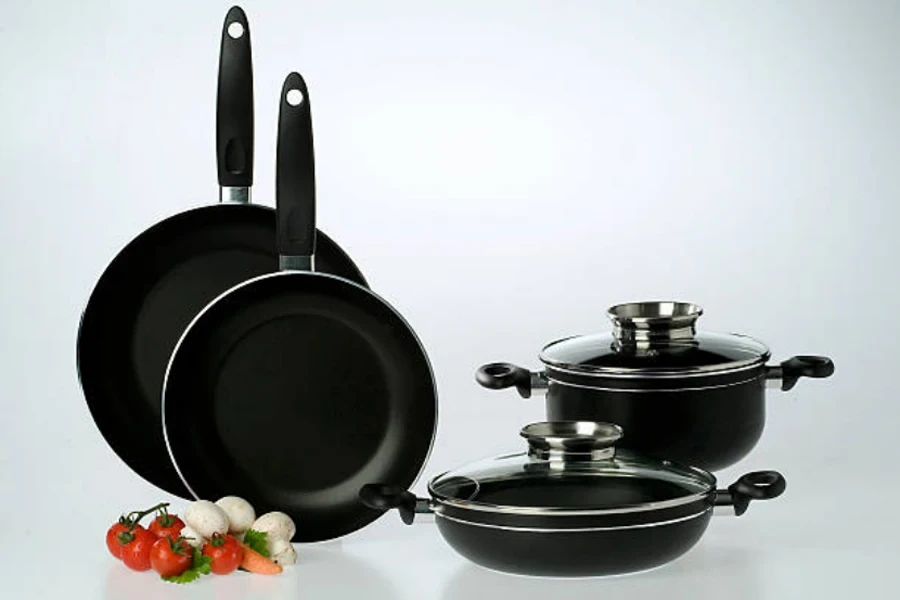
Skillets and Frying Pans: Skillets, also known as frying pans, are indispensable for a variety of tasks, including searing meats, sautéing vegetables, and even preparing sauces. A well-equipped kitchen should have at least two sizes:
Small (8-inch): Ideal for cooking smaller portions like eggs or pancakes.
Large (10 to 12-inch): Versatile for larger dishes, meats, and family-sized meals. The larger surface area allows for better heat distribution and the cooking of multiple ingredients simultaneously.
Sauce Pans: Sauce pans with tall sides and a small base are perfect for tasks that involve liquids, such as boiling water, cooking grains, and making sauces and soups. Essential sizes include:
Small (1 to 2-quart): Suitable for heating small amounts of liquids or making sauces.
Medium (3 to 4-quart): More versatile for cooking grains, small batches of soup, or vegetables.
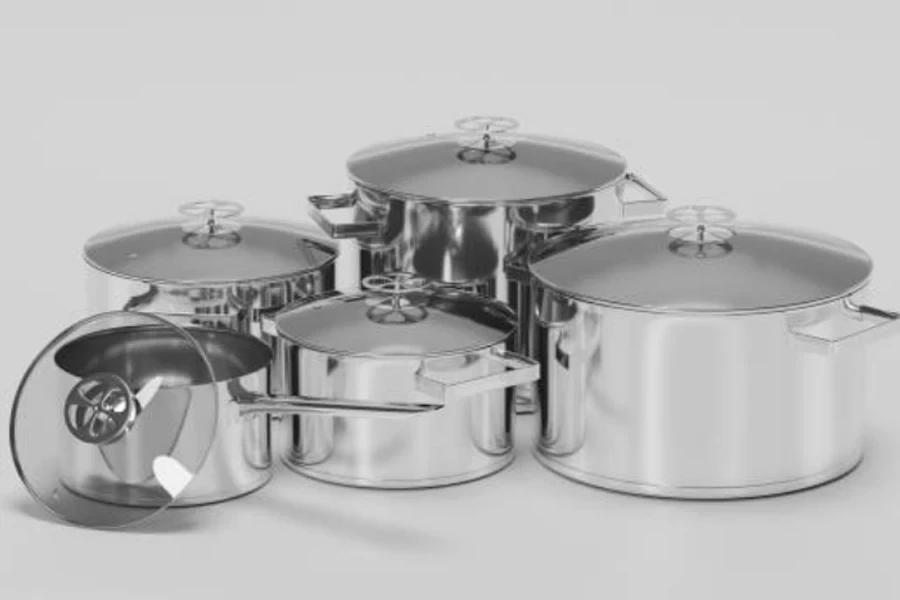
Stockpot: A large stockpot is crucial for making stocks, soups, and stews, as well as for boiling or blanching large quantities of food. An 8-quart stockpot is a practical size for most needs, providing ample space for making stock from bones or boiling pasta.
Sauté Pan: A sauté pan, with straight sides and a wide flat bottom, is designed for tasks that require more surface area than a saucepan. This includes searing meat, sautéing larger batches of vegetables, and preparing shallow braises. A 3 to 4-quart sauté pan is a versatile size that complements the functions of both skillets and saucepans.
Dutch Oven: A Dutch oven is a heavy, large pot that’s ideal for braising, making stews, and even baking bread. Its thick walls and tight-fitting lid retain moisture and heat, making it perfect for slow-cooking dishes. A 5 to 7-quart Dutch oven is a versatile size for most kitchen tasks, from preparing stews to baking no-knead bread.
Specialty Pans: Depending on culinary interests, additional specialty pans like a grill pan, wok, or nonstick skillet for eggs might complement the basic setup. These pieces should be chosen based on individual cooking habits and cuisine preferences.
In conclusion, a versatile kitchen arsenal should include a mix of skillets, saucepans, a stockpot, a sauté pan, and a Dutch oven, covering most cooking needs from frying and sautéing to simmering and braising. The size and composition of the cookware set should reflect the most common cooking tasks, ensuring that each piece serves a distinct purpose and contributes to the efficiency and functionality of the kitchen.
2024 cookware market insights
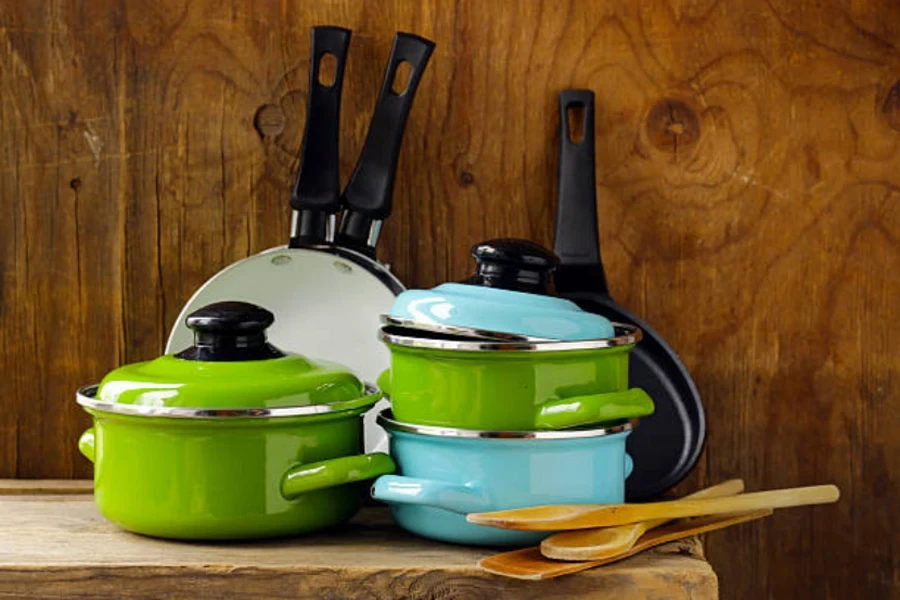
The cookware market is experiencing a transformative phase, driven by evolving consumer preferences and technological advancements. As of 2021, the market was valued at USD 23.73 billion, with projections indicating a rise to USD 41.12 billion by 2030. This growth trajectory underscores the dynamic nature of the industry and the significant opportunities it presents.
Trends shaping the cookware industry
A notable trend in the cookware industry is the growing emphasis on sustainability. Consumers are increasingly drawn to products that promise longevity, minimal environmental impact, and are made from recyclable or eco-friendly materials. This shift is prompting manufacturers to innovate in material use, product design, and manufacturing processes to meet these eco-conscious demands.
Another significant trend is the integration of technology into cookware products. Smart cookware, equipped with connectivity features that allow for remote monitoring and control, is becoming more prevalent. These technological enhancements not only offer convenience but also cater to the growing interest in precision cooking, enabling users to achieve consistent and desirable culinary results with minimal effort.
Market demand dynamics

The demand dynamics within the cookware market are influenced by several factors, including lifestyle changes, economic conditions, and shifts in cooking habits. The rising popularity of home cooking, partly fueled by cooking shows and social media, has led to an increased interest in high-quality, multifunctional cookware. This trend is particularly pronounced among millennials, who value both the aesthetics and functionality of cookware, often seeking pieces that can serve multiple purposes and fit into smaller living spaces.
The commercial sector, encompassing restaurants, hotels, and other eateries, presents another area of growth. With the global expansion of the hospitality industry and an uptick in international tourism, there’s a heightened demand for durable, versatile, and high-performance cookware capable of withstanding the rigors of professional kitchens.
In conclusion, the cookware market in 2024 is characterized by a strong consumer preference for sustainable, technologically advanced, and multifunctional products. These trends, coupled with the evolving needs of both residential and commercial sectors, are shaping the offerings within the cookware industry, driving innovation, and expanding the market’s overall potential. Understanding these market dynamics is crucial for industry players aiming to navigate the changing landscape and capitalize on emerging opportunities.
Criteria for cookware selection
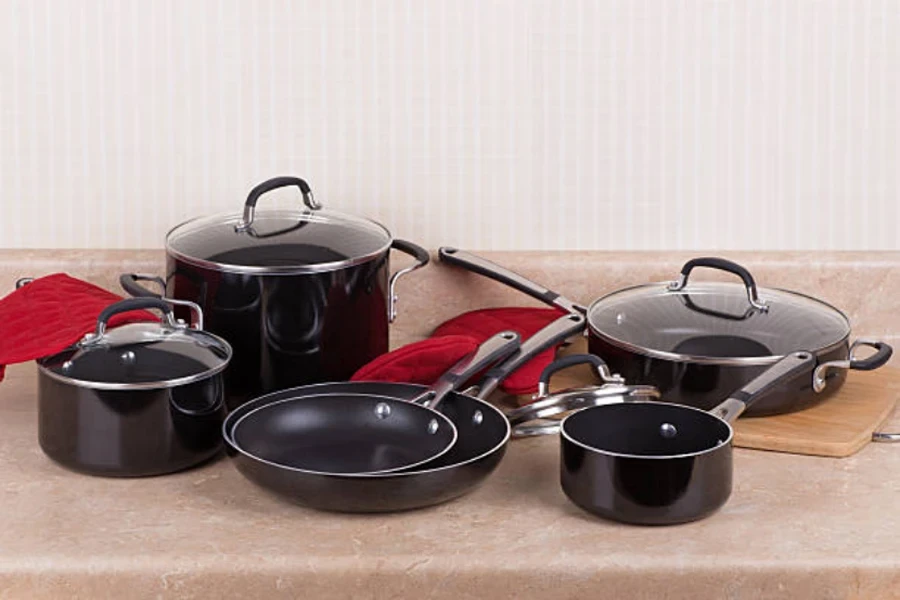
Selecting the ideal cookware is pivotal in the culinary domain, where the choice of materials significantly affects cooking outcomes. Understanding the distinct characteristics of various cookware materials is essential for ensuring optimal heat management, longevity, and compatibility with cooking surfaces.
Heat conductivity and retention
The significance of heat conductivity and retention in cookware performance cannot be overstated, as these factors directly impact the efficiency and outcome of cooking processes. The choice of cookware material plays a pivotal role in heat management, with each material offering distinct properties that cater to different cooking needs.
Heat conductivity
Heat conductivity refers to the ability of a material to conduct and distribute heat across its surface. Materials with high heat conductivity, such as copper and aluminum, are prized in cookware for their ability to rapidly and evenly heat up, allowing for precise cooking control. For instance, copper, known for its superior heat conductivity, can heat up almost instantaneously, providing chefs with unmatched responsiveness to temperature changes. This makes copper cookware ideal for cooking tasks that require precise heat control, such as simmering delicate sauces or melting chocolate.
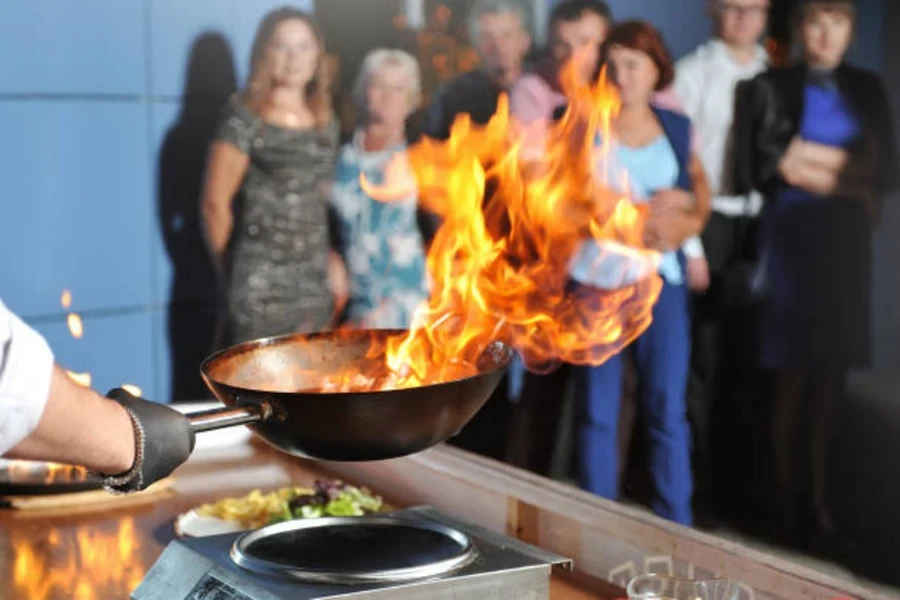
Aluminum, another highly conductive material, is often used as a core in multi-layered cookware constructions like fully clad tri-ply stainless steel cookware. This construction involves sandwiching a layer of aluminum between two layers of stainless steel, combining the excellent heat conductivity of aluminum with the durability and non-reactive properties of stainless steel. Such cookware benefits from the even heat distribution provided by the aluminum core, preventing hot spots and ensuring uniform cooking.
Heat retention
Heat retention, on the other hand, is the ability of a material to hold onto heat once it has been absorbed. Cast iron is a material renowned for its heat retention properties. Once heated, cast iron cookware retains heat for an extended period, making it perfect for slow-cooking recipes that benefit from a gradual and sustained heat source, such as stews and braises. The heat retention of cast iron also makes it ideal for searing meats, as the high and consistent heat creates a perfect sear without drastic temperature fluctuations.
However, the trade-off with materials that have high heat retention, like cast iron, is that they tend to be slower to heat up and adjust to temperature changes. This characteristic makes them less suitable for cooking tasks that require quick temperature adjustments.
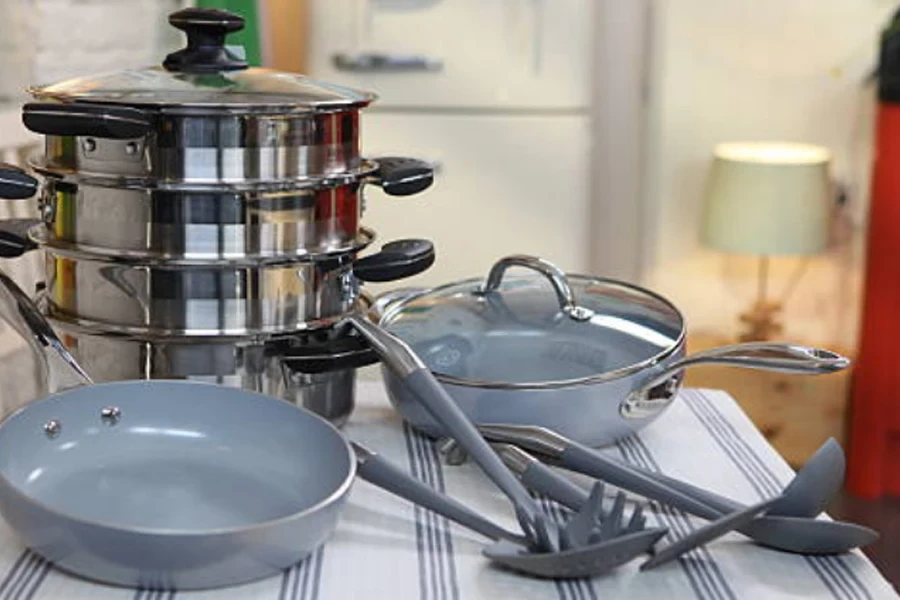
Material comparisons
In a study examining the deformation of materials under heat (Budnikov, et al.), the thermal properties of different metals were analyzed, shedding light on their suitability for various cookware applications. The study, while focused on pipe billets, offers insights into the behavior of metals under thermal stress, which is directly applicable to cookware performance. For instance, materials that exhibit stable deformation under heat, akin to certain steel alloys examined in the study, are likely to provide consistent cooking performance, a desirable attribute for professional-grade cookware.
In conclusion, selecting the right cookware material requires a balance between heat conductivity and retention. Materials like copper and aluminum offer high heat conductivity, ideal for tasks requiring quick and even heating, while cast iron provides superior heat retention, suited for slow cooking and searing. Understanding these properties allows for informed decisions when building a versatile and efficient cookware collection, tailored to the diverse needs of culinary professionals.
Durability and maintenance

The durability and maintenance of cookware are crucial factors that significantly contribute to its longevity and overall performance in the kitchen. These aspects are influenced by the material composition, construction quality, and the care practices applied to the cookware over its lifespan.
Durability factors
The lifespan of cookware is determined by its resistance to wear and tear, including factors like corrosion, scratching, and thermal shock. For instance, premium nonstick pans, known for their convenience and ease of use, typically have a lifespan of three to five years. The durability of these pans is contingent upon the quality of the nonstick coating, often made from synthetic materials like polytetrafluoroethylene (PTFE) or perfluorooctanoic acid (PFOA). While these coatings provide excellent nonstick properties, they are susceptible to peeling and wear over time, particularly when subjected to high heat or abrasive cleaning tools.
In contrast, all-ceramic pans boast a significantly longer lifespan, potentially lasting for generations with proper care. Ceramic cookware, free from synthetic nonstick coatings, doesn’t face the same risk of coating degradation. This makes them a more durable choice, resistant to scratching, chipping, and the thermal stresses associated with regular cooking. Their longevity is enhanced by their ability to withstand high temperatures, providing consistent heat retention without the risk of coating breakdown.
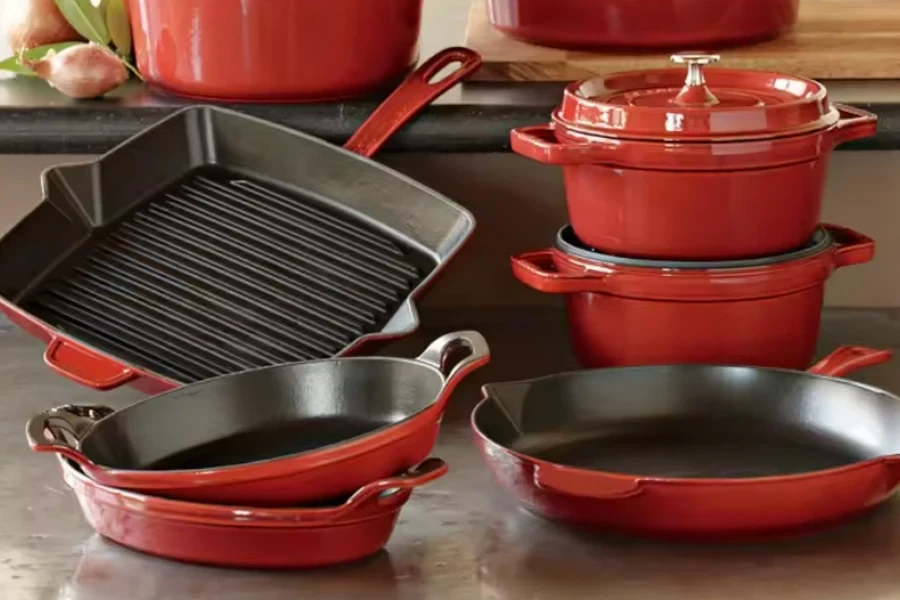
Maintenance practices
The ease of care and maintenance practices also play a pivotal role in extending the life of cookware. For nonstick pans, avoiding metal utensils and abrasive cleaning pads can prevent damage to the nonstick surface, preserving its functionality. Hand washing, rather than using a dishwasher, can also prevent the harsh detergents and high temperatures from degrading the nonstick coating.
Ceramic cookware, while robust, benefits from gentle handling to avoid chipping. Using wooden or silicone utensils can maintain the integrity of the ceramic surface. Cleaning with mild detergents and soft sponges helps preserve the finish, while avoiding extreme temperature changes can prevent cracking due to thermal shock.
Cost considerations
The initial cost and the potential need for replacement must be considered when selecting cookware. Nonstick pans, while initially more affordable, may require more frequent replacements due to the wear of the nonstick surface. On the other hand, the higher upfront cost of ceramic cookware is offset by its durability, making it a cost-effective option in the long run.
In summary, the choice between ceramic and nonstick cookware hinges on considerations of durability and maintenance. While nonstick pans offer convenience, their lifespan is limited by the durability of the coating. Ceramic pans, though potentially higher in initial cost, provide a longer-lasting, durable option that can withstand the rigors of daily use with proper care. Understanding these factors helps in making an informed decision that balances performance, longevity, and value.
Compatibility with cooking surfaces
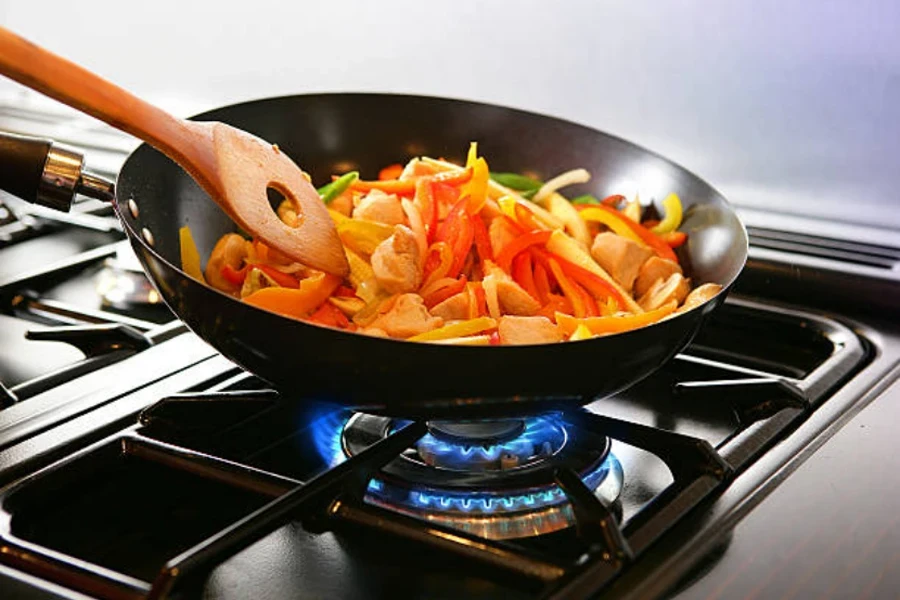
When selecting cookware, compatibility with cooking surfaces is a critical consideration, especially with the diversity of stovetops available, including gas, electric, and induction. Each cooking surface has specific requirements that influence the choice of cookware material and construction.
Induction cooktop compatibility
Induction cooking, known for its efficiency and precision, requires cookware made of ferromagnetic materials, such as cast iron or certain types of stainless steel. The underlying principle of induction cooking is magnetism; the cooktop generates a magnetic field that induces heat in the cookware, which in turn cooks the food. A simple way to determine if cookware is compatible with an induction cooktop is the magnet test. As recommended by experts, placing a magnet at the bottom of the pan can reveal its suitability for induction cooking—if the magnet sticks, the cookware is compatible.
However, not all cookware that appears to be made of the right materials may be compatible with induction cooking. For example, while most stainless steel cookware works with induction cooktops, some stainless steel alloys are not magnetic and therefore won’t work. Similarly, aluminum and copper pans, typically non-magnetic and thus incompatible with induction, may still be used if they have a magnetic layer or base, making them induction-ready.
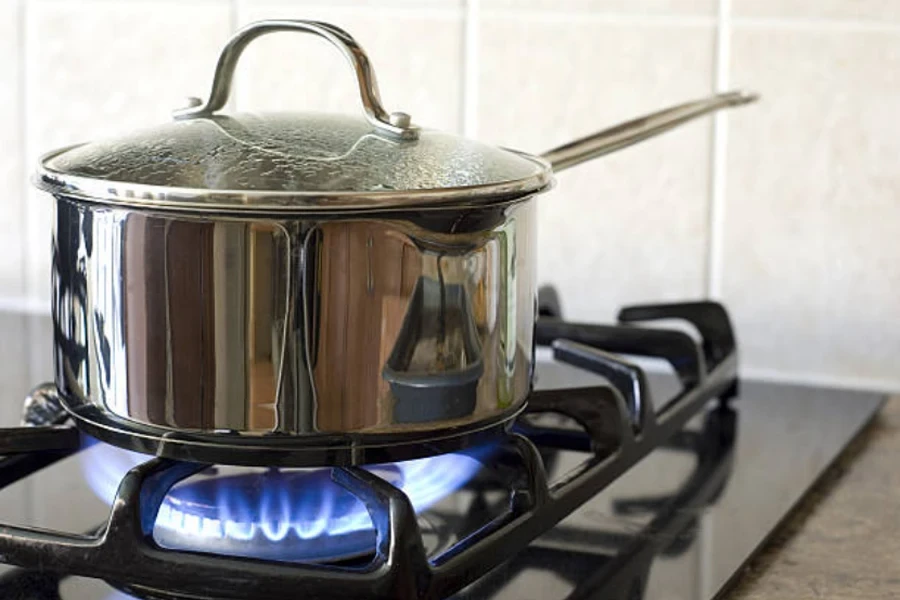
Gas and electric stove compatibility
Cookware for gas and electric stoves doesn’t require magnetic properties, offering a broader range of material options. Gas stoves, with their direct flame, allow for cookware made from a variety of materials, including aluminum, copper, stainless steel, and cast iron. The open flame of a gas stove can accommodate different cookware shapes and sizes, providing flexibility in cookware selection.
Electric stoves, particularly those with coil elements, distribute heat across the cookware’s base, necessitating flat-bottomed pots and pans for optimal heat distribution and cooking results. Glass and ceramic cooktops, a subset of electric stoves, require cookware with smooth bottoms to avoid scratching the cooktop surface.
Considerations for all cooking surfaces
Regardless of the cooking surface, certain features enhance cookware’s performance across all stovetop types. These include a thick base for even heat distribution, minimizing hot spots, and a well-constructed, heat-resistant handle for safe handling. Additionally, the weight and balance of the cookware contribute to its stability on the cooktop, ensuring safety and ease of use during cooking.
In conclusion, selecting the right cookware involves understanding the specific requirements of the cooking surface in use. For induction cooktops, ferromagnetic materials are essential, while gas and electric stoves offer more versatility in material choices. Regardless of the stove type, features such as a thick base, smooth bottom, and heat-resistant handles are universal considerations that contribute to the cookware’s performance and longevity.
Top cookware sets of 2024: Features and innovations
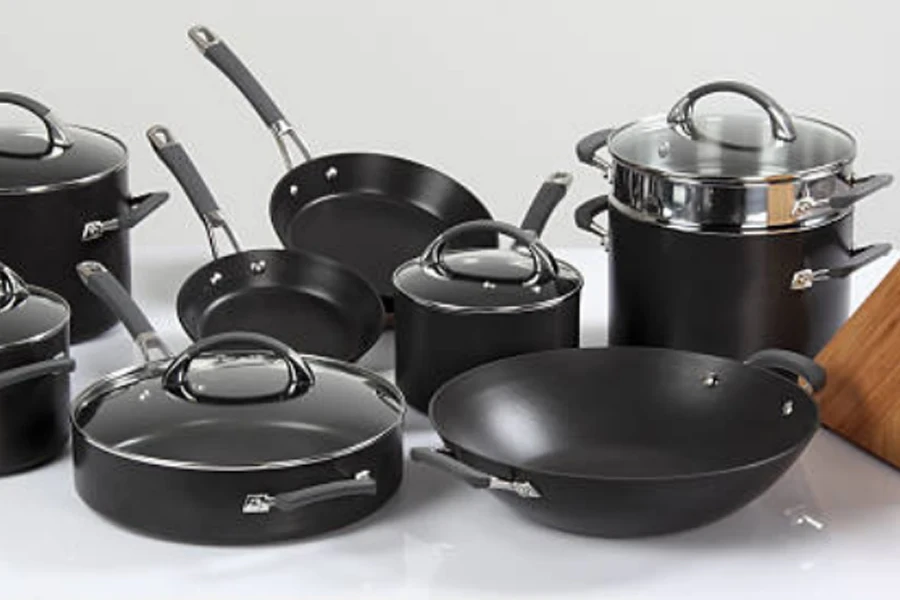
In the realm of cookware, the year 2024 marks a significant evolution with leading models showcasing a blend of innovative features and design enhancements that cater to the diverse needs of culinary enthusiasts. The convergence of durability, functionality, and aesthetic appeal defines the top-tier cookware sets of this year.
Leading models and their distinguishing characteristics
The cookware landscape in 2024 is marked by an exciting array of options, with leading models showcasing innovative features that cater to the modern cook’s diverse needs. These top-tier sets blend aesthetic appeal with functionality, ensuring that every culinary task, from searing to simmering, is effortlessly achievable.
Tramontina Gourmet 12-Piece Tri-Ply Clad Cookware Set
The Tramontina Gourmet 12-Piece Tri-Ply Clad Cookware Set stands out for its remarkable blend of performance and durability, all at an accessible price point. This set is constructed from fully clad tri-ply stainless steel, ensuring even heat distribution and exceptional durability. The inclusion of both 8- and 10-inch skillets speaks to the set’s versatility, allowing cooks to undertake a wide range of tasks. Notably, the ergonomically designed handles offer comfort and ease during use, a feature particularly appreciated during long cooking sessions. This set’s adaptability across all cooktops, including induction, further underscores its appeal to a broad spectrum of culinary enthusiasts.
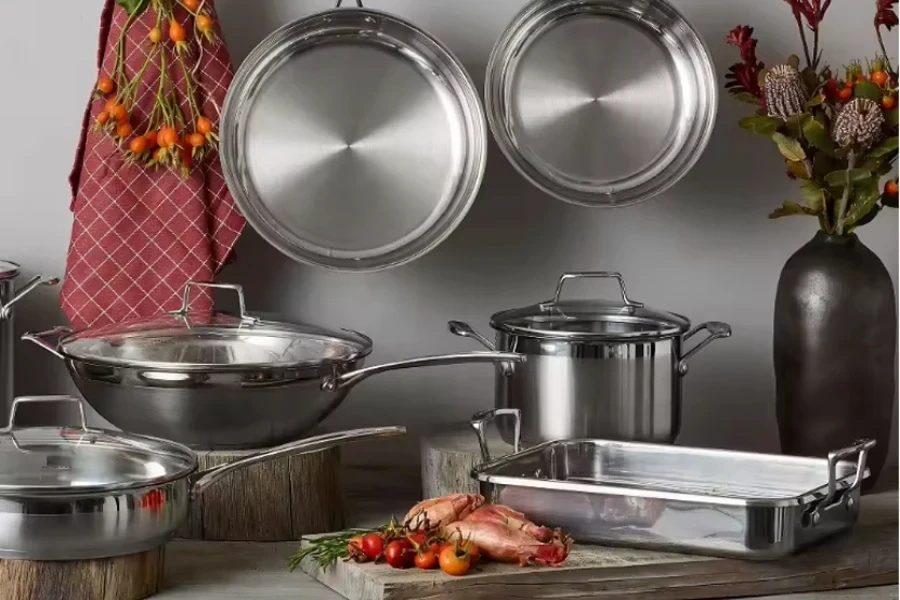
All-Clad D3 Tri-Ply Stainless Steel 10-Piece Set
For those seeking unparalleled quality, the All-Clad D3 Tri-Ply Stainless Steel 10-Piece Set represents the epitome of cookware excellence. Renowned for its even heat distribution and robust construction, this set is a favorite among professional chefs and discerning home cooks alike. The All-Clad set’s balanced weight and meticulous craftsmanship facilitate a seamless cooking experience. Each piece in this collection is engineered to withstand the demands of a busy kitchen, ensuring longevity and consistent performance.
Goldilocks Cookware Set Plus
The Goldilocks Cookware Set Plus offers a compelling value proposition, blending quality with affordability. This set’s fully clad tri-ply stainless steel construction ensures efficient heat management, while the inclusion of larger skillet sizes addresses the practical needs of contemporary kitchens. Despite its budget-friendly price tag, the Goldilocks Set Plus delivers performance that rivals more expensive options, making it an attractive choice for those seeking reliable and efficient cookware without a hefty investment.
In summary, the top cookware sets of 2024 are characterized by innovative design, superior functionality, and a range of options to suit various budgets and preferences. From the versatile Tramontina set to the premium All-Clad collection and the value-oriented Goldilocks set, there’s a cookware solution for every kitchen. These sets not only enhance the cooking experience but also stand as a testament to the advancements in cookware technology and design.
Expert endorsements and consumer favorites
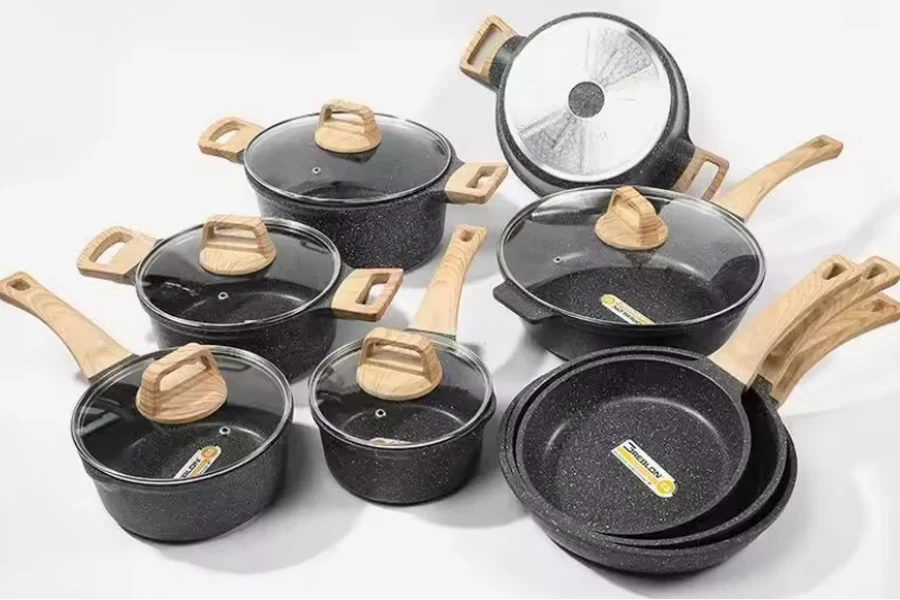
In the realm of culinary essentials, expert endorsements and consumer preferences play a pivotal role in distinguishing the top cookware sets of 2024. These accolades not only underscore the quality and performance of the cookware but also guide consumers in making informed choices.
Caraway Ceramic-Coated Non-Stick Cookware Set
The Caraway Ceramic-Coated Non-Stick Cookware Set has garnered attention for its exceptional performance, which aligns with its online popularity. In tests, this set excelled in all key areas, including cooking evenness, simmering, nonstick food release, and speed of heating. The sturdiness of the handles and their ability to stay cool during cooking further elevate the user experience. The set’s aesthetic appeal, available in six colors, adds a touch of elegance to any kitchen. The inclusion of non-cooking pieces, such as racks and trivets, may not be essential for all users but offers a comprehensive package for those setting up a new kitchen or looking for a complete overhaul.
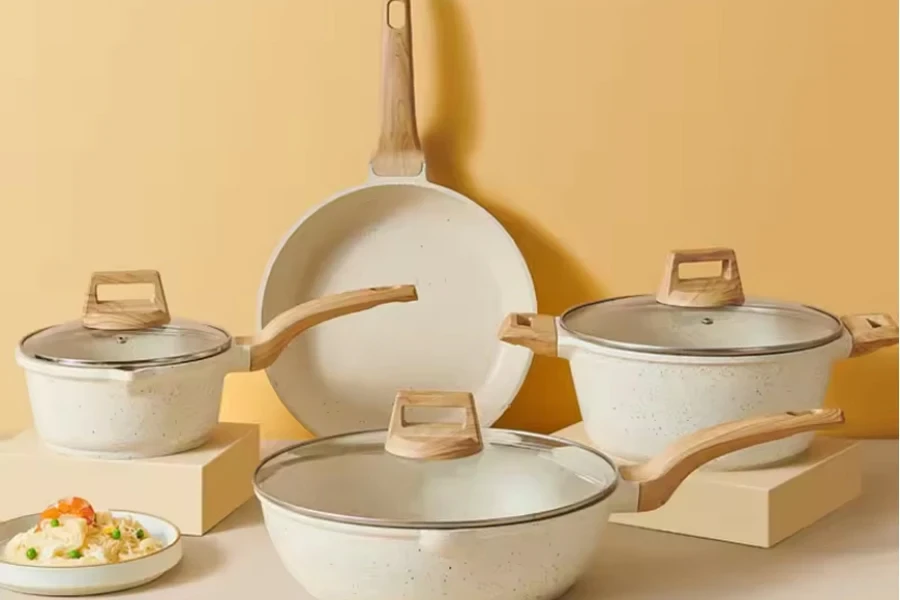
GreenPan Reserve Ceramic Nonstick Cookware Set
The GreenPan Reserve Ceramic Nonstick Cookware Set stands out not just for its functionality but also for its distinctive style, featuring a pink blush exterior, white ceramic interior, and gold handles. Its substance is equally impressive, with top-notch scores in major cooking tasks and an excellent rating for speed of heating. The durability of the nonstick coating, combined with the cool-to-touch and sturdy handles, makes this set a preferred choice among style-conscious consumers seeking performance without compromise.
Member’s Mark (Sam’s Club) Hard Anodized Aluminum Cookware Set
Offering remarkable value, the Member’s Mark Hard Anodized Aluminum Cookware Set from Sam’s Club defies its modest price point with stellar performance. This set has proven its mettle in cooking evenness, simmering, and speed of heating tests, challenging the notion that affordability comes at the cost of quality. The ease of food release and the relative coolness and sturdiness of the handles further attest to its quality, making it an attractive option for budget-conscious consumers unwilling to sacrifice performance.
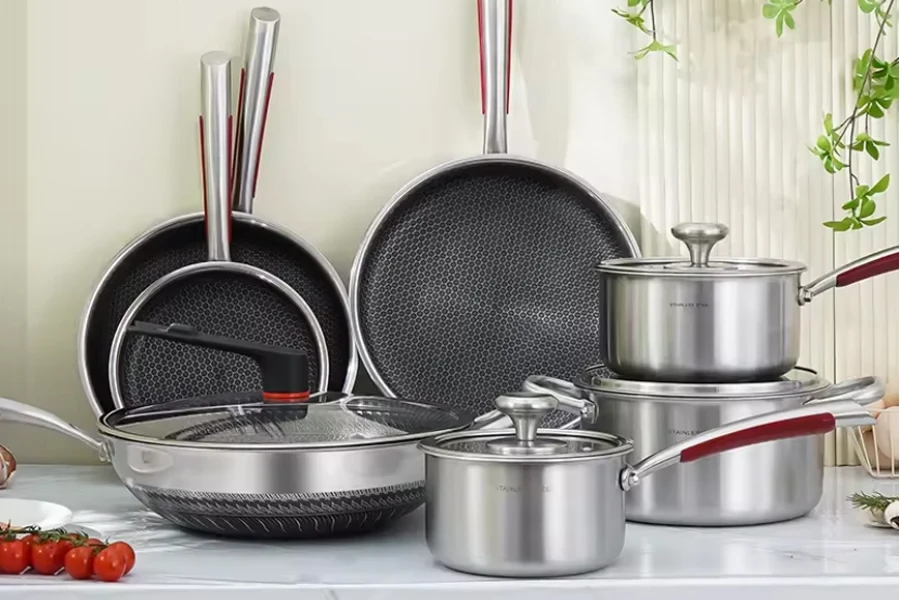
Oxo Ceramic Professional Non-Stick Cookware Set
The Oxo Ceramic Professional Non-Stick Cookware Set distinguishes itself with a business-like approach, focusing solely on pots, pans, and lids without additional frills. Its exceptional cooking evenness and rapid water boiling capability make it a practical choice for those who prioritize efficiency in the kitchen. The sturdiness and coolness of the handles enhance safety and comfort, making this set a solid choice for pragmatic cooks looking for straightforward, high-performing cookware.
In conclusion, the expert endorsements and consumer favorites of 2024 reflect a blend of performance, aesthetics, and value. From the comprehensive Caraway set to the stylish GreenPan, the value-driven Member’s Mark, and the efficient Oxo set, consumers are presented with a variety of options that cater to diverse culinary needs and preferences. These accolades not only affirm the quality of the cookware but also serve as a reliable guide for consumers navigating the vast array of cookware options available on the market.
Conclusion
Navigating the 2024 cookware landscape reveals a rich tapestry of options, from the innovation-driven designs of Caraway and GreenPan to the enduring appeal of traditional stalwarts like All-Clad. For industry professionals, understanding these trends is key to selecting cookware that not only meets the rigorous demands of commercial kitchens but also resonates with the evolving preferences of consumers. This synthesis of functionality, aesthetic, and value underscores the importance of making informed choices that enhance culinary creativity and operational efficiency.
